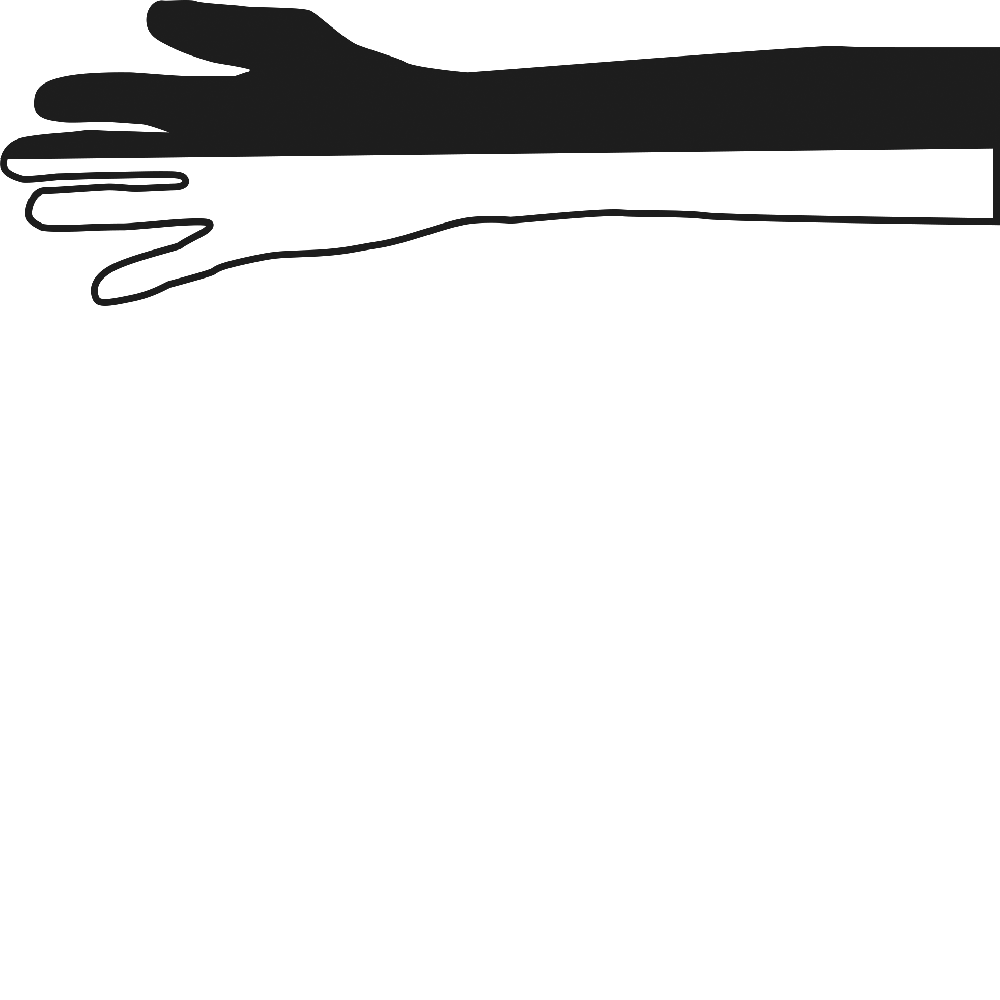Blood
When Hurricane Katrina struck New Orleans in 2005, it disproportionately affected the city’s low-income rental properties, especially in predominantly African American neighborhoods. The elimination of roughly 50,000 rentals pushed market rates up by 35%, thus making housing too expensive for many former tenants.1 Meanwhile, tens of thousands of damaged homes lay abandoned. Federal assistance programs provided temporary accommodations, but creating long-term housing solutions for low-income populations proved one of the most formidable challenges facing the city and the region at large.2
St. Bernard Parish, which sits just east of New Orleans’s Lower Ninth Ward, did not plan on cooperating with its neighbors to alleviate the shortage.3 Shortly after Katrina, the parish passed an ordinance to maintain the “integrity” and “family atmosphere” of its “long established neighborhoods.” Under this new “blood relative ordinance,” owners of single-family homes that had not been rentals prior to the hurricane could now only rent their homes to blood relatives. Importantly, a whopping 93% of the parish’s property owners were white, along with 88% of its overall population, whereas neighboring New Orleans communities were majority black. The Greater New Orleans Fair Housing Action Center promptly sued St. Bernard, calling the blood-relative ordinance blatantly racist and in violation of the Fair Housing Act. Soon after, the Parish was forced to repeal the law.4
But the story doesn’t end there. In 2007, the St. Bernard Parish Council banned the rental (and even lending) of single-family properties in much of its district, including to blood-relatives. The next year, it imposed a one-year moratorium on any multifamily units. After a federal court struck the moratorium down for again violating the Fair Housing Act, Parish officials countered with a new law requiring a public vote on multifamily dwellings larger than six units.
Shed
Alter Road marks the political boundary between Detroit and Grosse Pointe Park. Though less notorious than Eight Mile, the city-suburb divide is equivalently stark: in the words of a local TV news reporter, there’s “boarded-up blight [and] a St. Vincent de Paul Thrift Store” on the Detroit side, “trendy restaurants, families on bikes, decorative street lighting,” on the other.5 Additionally, Grosse Pointe Park is roughly 85% white, whereas the neighboring Detroit community is about 82% black.6
Running perpendicular to Alter Road is Kercheval Avenue, or “the Kerch,” which functions as the area’s main eastside route for motor traffic, including buses. On a few summer weekends in 2013, the City of Grosse Pointe Park experimented with closing sections of the street to cars to hold outdoor events.7 The programming was part of a larger vision: creating a more walkable community that would appeal to young, white-collar professionals. But city leaders also worried about Detroit’s blight spilling across the boundary, and so more aggressive plans were drafted to demarcate the commercial district from its less affluent neighbors.8
The following winter, sewer line construction on Kercheval closed the street for months. While impassable, Grosse Pointe Park used the space to dump its excess snow. Some residents on the Detroit side perceived the resultant snow wall as a “distasteful” barrier between the communities. Motor City Muckraker even reported that the mounds were reminiscent of “the blockades built to keep out black Detroiters [during the 1967 riots] half a century ago.”9 Meanwhile, rumors circulated of new developments that would stretch across Kercheval, permanently closing the thoroughfare to motor traffic. But a Grosse Pointe Park spokesman responded that no such plans were in the works.10 The snow piles were eventually cleared, and the street was again opened up.
However, that summer Grosse Pointe Park announced its collaboration with the Grosse Pointe Foundation and local entrepreneurs to build a concrete market square, along with semi-permanent sheds, in the middle of Kercheval.11 The West Park Farmers Market, which took place on Saturdays, would now operate three days a week out of the new spaces. Cars would be rerouted through an alley, making three sharp turns at 5 miles per hour. The sheds would face east, with their backs turned to Detroit.12
Immediately, Kercheval’s closing was perceived as an attempt to keep out black Detroiters. Residents protested that this was the sixth traffic barrier on Alter Road that separated the two cities.13 Greg Theokas, Mayor Pro Tem of Grosse Pointe Park, explained the new market square was not racially motivated, and in fact could provide jobs and fresh produce to Detroit residents, as well. Some suburban businesses described the project as having immediate positive effects on the neighborhood.14
Basketball Hoop
In 2012, the majority white town of Springfield, New Jersey nearly voted to dismantle its outdoor basketball hoops on the grounds that one of its parks was attracting out-of-town players – primarily young black males – who were monopolizing the courts, swearing, and generally scaring the locals. “People are intimidated,” one resident complained. “I used to look out of my window at a beautiful park with parents and kids playing soccer, now it looks like Rahway State Prison yard.”15
Ultimately, Springfield chose to keep its hoops, but an untold number of suburban communities around the country have opted to remove theirs. Numerous Illinois suburbs – including Oak Lawn, Palos Hills, Hoffman Estates, and Hanover Park–have torn down their hoops to “fend off fighting and swearing…curb noise…and limit violence” among visiting players from the South Side of Chicago who “don’t pay for the parks.”16 On the outskirts of Cleveland, the towns of Euclid and Lakewood–following neighborhood complaints about disorderly non-residents–have removed every public outdoor basketball hoop. Although nearby Cleveland Heights hosts a handful of courts, they can only be accessed with a pass from the town’s recreation department.17 And inner-ring suburbs in Baltimore County removed so many public basketball hoops during the 1990s (once again, due to complaints of noise, swearing, littering, and fighting among “outsiders”) that, on warm evenings, crowds of over fifty people would congregate on the few remaining courts, while hoop-less backboards rusted in adjacent parks.18
But basketball hoop removal, as a means of preventing the gathering of young men of color, is far from limited to the suburbs. Within cities, too, the dismantlement of hoops can reinforce neighborhood racial divisions. To cite one example: residents of Cleveland’s middle-class West Park neighborhood became so fed up with the behavior of basketball players from surrounding communities that the park’s hoops were mysteriously destroyed by vigilantes in the middle of the night (“someone hitched a truck to the thick poles that supported the backboards, then made a tractor pull – bending one hoop almost to the ground and the other to about half its regulation height.”)19 According to The Cleveland Scene, the vandalism was barely investigated, and the community chose not to replace the hoops. “It’s not kids in the neighborhood [who caused the problems],” one resident stated. “They don’t belong here. I’m not prejudiced. But these bozos would constantly ‘F-you!’ F-you! F-you!’…They ruin it for themselves.”20
The Resiliency of Racism
Not so long ago, it wasn’t so difficult for white people to legally exclude people of color from their communities. For example, they could count on real estate developers to embed racial covenants in the deeds of neighborhood homes, thereby forbidding “persons of Asiatic, African, or Negro blood”21 from living in them. They could count on brokers to never introduce “inharmonious elements” into their neighborhood.22 In some cases, they could count on their city to zone entire neighborhoods for specific races, thereby prohibiting people of color from moving into majority white areas (and vice versa) in the first place.23 Most importantly of all, perhaps, they could count on the federal government to “redline” black neighborhoods, and steer lenders away from the inner-city, while also incentivizing “white flight” into segregated, postwar suburban communities.24 Of course, when any of these (or countless other) methods of exclusion faltered, a racist white citizenry could also commit violent terrorist acts against black people with relative impunity.
Racial covenants, racial steering, racial zoning, and mortgage discrimination have been outlawed, but as the abovementioned discriminatory antics about St Bernard Parish’s blood relative ordinance, Grosse Pointe Park’s shed, and the various suburbs’ removal of basketball hoops suggest, there is certainly no shortage of contemporary weapons of exclusion. These discriminatory antics illustrate the resiliency of racism, but also its pervasiveness: the examples above create exclusion in housing, transportation, and public space, respectively. The examples above also illustrate what we might call the resourcefulness of racism, since the weapons they describe take the form of a policy, an artifact, and a practice.
As the examples above make plain, those of us who are working to build more integrated communities have to first of all be vigilant, and remain on the lookout for the counter-policies, practices, and artifacts that pop up and undermine accessibility-promoting policies. And because these tend to take some surprising forms (blood-relative ordinances, snow banks, sheds, etc.) we sometimes have to see past appearances. (To cite another example of this, in California, where State law prohibits sex offenders from living within 2,000 feet of a park or school, communities across Los Angeles have started building “Parks” – some of them just a few thousand square feet – in spaces that fall outside these 2,000-feet radii, effectively forcing sex offenders to leave town.)25
The resiliency of racism suggests that we will not have integrated, equitable cities until we work on the will in addition to the way – until people are less likely to exercise the exclusionary impulse in the first place. But in the meantime we need to continue to produce and enforce progressive policies that not only removes barriers, but affirmatively further integration. Indeed, thanks to the Fair Housing Act, in the end, St. Bernard Parish was unsuccessful in its discriminatory antics. Fed up with what the U.S. Department of Justice would later call St. Bernard Parish‘s “multi-year campaign to limit rental housing opportunities for African-Americans”26, the Department of Housing and Urban Development threatened in 2011 to revoke $91 million in federal aid unless the Parish repealed the aforementioned ordinances. The Parish complied. (In Grosse Pointe Park’s case, it turned out that the market had been built on Detroit property, which meant that Grosse Pointe Park did not have the necessary approval to construct the blockade.)27
Unfortunately, as Nikole Hannah-Jones illustrates in “Living Apart: How the Government Betrayed a Landmark Civil Rights Law,” enforcing progressive, accessibility-promoting policies like the Fair Housing Act hasn’t exactly been a priority for the Federal Government. Hannah-Jones notes that, though states, cities and towns seeking HUD money for water, sewer and highway projects are supposed to identify obstacles to fair housing, keep records of their efforts to overcome them, and certify that they do not discriminate, there have been only two occasions since 1973 in which the department withheld money from localities for failing to do so. In fact, writes Hannah-Jones, in several instances, “HUD has sent grants to communities even after they’ve been found by courts to have promoted segregated housing or been sued by the U.S. Department of Justice.” New Orleans, for example, “has continued to receive grants after the Justice Department sued it for violating that Fair Housing Act by blocking a low-income housing project in a wealthy historic neighborhood.”
The recent uprisings in Ferguson, Missouri, catalyzed by the police shooting of 18-year-old Michael Brown, have helped to dispel the myth of a post-racial, Obama-era America. They have also demonstrated, as Richard Rothstein elucidates in “The Making of Ferguson: Public Policy at the Root of its Troubles,” the degree to which white supremacy, as reflected in public policy, has shaped and continues to shape our urban environments.28 Let’s hope the renewed conversations around race and place that have emerged in the wake of the protests lead to a renewed effort to remove barriers to access, and build more integrated, equitable cities.
March 2015
References (Endnotes)
- Leslie Eaton, “In New Orleans, Plan to Raze Low-Income Housing Draws Protest,” New York Times, December 14, 2007, accessed August 2014.↩
- Campbell Robertson, “Housing Battle Reveals Post-Katrina Tensions,” New York Times, October 3, 2009, accessed August 2014.↩
- St. Bernard Parish was also devastated by Katrina and the subsequent levee breaches. Roughly 80% of its housing units were severely damaged and about half of its population was initially displaced. Due to a Murphy Oil refinery spill, sections of the parish also became brownfield sites. Benjamin Alexander-Bloch, “St. Bernard Parish community reflects on Hurricane Katrina anniversary,” The Times-Picayune, August 29, 2013, accessed August 2014. Also: Billy Sothern, “A Question of Blood,” The Nation, March 27, 2007, accessed March 2015.↩
- “Time Runs Out for St. Bernard Parish,” New York Times, March 29, 2011, accessed August 2014.↩
- Rodi Meloni, “Newly constructed barrier appears to separate Grosse Pointe Park, Detroit,” WDIV-TV, June 27, 2014, accessed September 2014.↩
- Gus Burns, “Kercheval barricade at Detroit-Grosse Pointe Park border removed; development rumors unfounded, city says,” February 13, 2014, MLive.com, accessed September 2014.↩
- Bill Laitner, “Kercheval Avenue closure for farmers market has some feeling shut out,” Detroit Free Press, July 28, 2014, accessed September 2014.↩
- Ibid.↩
- Steve Neavling, “Grosse Pointe Park builds wall of snow on busy road at border with Detroit,” Motor City Muckraker, February 13, 2014, accessed September 2014.↩
- Burns, “Kercheval barricade at Detroit-Grosse Pointe Park border removed.”↩
- Kathy Ryan, “Looking forward to summer,” Grosse Pointe News, April 20, 2014, accessed September 2014.↩
- Laitner, “Kercheval Avenue closure for farmers market has some feeling shut out.”↩
- Steve Neavling, “Records: Grosse Pointe used Detroit property to build controversial blockade without approval,” Motor City Muckraker, July 16, 2014.↩
- Laitner, “Kercheval Avenue closure for farmers market has some feeling shut out.”↩
- Julia Terruso, “Hoopla in Springfield: Residens argue over town’s decision to take down basketball hoops,” Star-Ledger, August 28, 2012, accessed March 2015. ↩
- Angie Leventis Lourgos, “Some towns having bad hoop dreams,"" Chicago Tribune, October 6, 2013, accessed March 2015.↩
- Michael Gill, “Where Hoop Dreams Die,” Cleveland Scene, June 30, 2010, accessed February 2015.↩
- Joe Nawrozki, “Net loss in the suburbs: Unruly behavior, racial fears lead to removal of hoops,” Baltimore Sun, April 21, 1996, accessed February 2015.↩
- Michael Gill, “Where Hoop Dreams Die,” Cleveland Scene.↩
- Ibid.↩
- “The Seattle Open Housing Campaign, 1959-1968,” Seattle Municipal Archives, accessed March 2015.↩
- National Association of Real Estate Brokers (NAREB) (Code of Ethics: 1922): Article 34.↩
- Antero Pietila, Not in My Neighborhood (Chicago: Ivan R. Dee, 2010). ↩
- U.S. Federal Housing Administration (1936). Underwriting Manual: Underwriting and Valuation Procedure Under Title II of the National Housing Act. Washington, D.C.: U.S. Government Printing Office. ↩
- Ian Lovett, “Neighborhoods Seek to Banish Sex Offenders by Building Parks,” New York Times, March 9, 2013, accessed June 2014. ↩
- “Fair Housing Center and U.S. Department of Justice File Suit Against St. Bernard Parish Over Racial Discrimination in Housing,” Greater New Orleans Fair Housing Action Center, February 1, 2012, accessed August 2014.↩
- Bill Laitner, “Grosse Pointe Park to lift Kercheval barricade, add plaza,” Detroit Free Press, December 18, 2014, accessed January 2015.↩
- Richard Rothstein, “The Making of Ferguson: Public Policy at the Root of its Troubles,” October 15, 2014, accessed October 2014.↩



